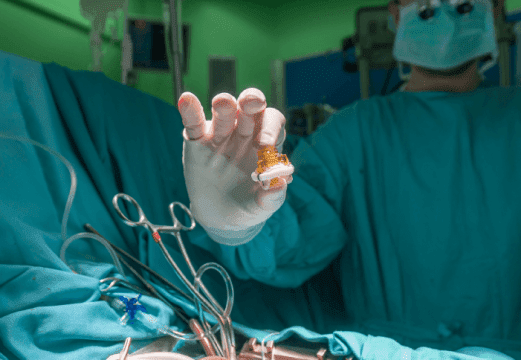Tricuspid valve regurgitation is more common than one might think. It often stems from left valve disease and associated with increased mortality and hospitalization due to heart failure, which is not easy to treat.

Currently, guidelines list surgery as the recommended treatment, though this option is quite complex and might entail complications and mortality risk.
An alternative treatment for this condition is the edge-to-edge percutaneous procedure. However, it is typically reserved for high-risk patients who are not candidates for traditional surgery.
The TRILUMINATE study is a prospective trial that included 85 patients with moderate to severe or more severe tricuspid regurgitation. These patients underwent edge-to-edge treatment using the Abbott (Santa Clara, California) TriClip device.
The average age of the participants was 77 years, and 66% of them were women. Additionally, 86% had hypertension, 22% had diabetes, 17.6% had experienced a prior infarction, 92% had atrial fibrillation, 14% had undergone pacemaker implantation, and 46% had impaired kidney function. The EUROScore was 8.7%.
Read also: BIFURCAT Registry: Long Term Diabetes Impact on Bifurcations PCI Outcomes.
Regarding the cause of tricuspid regurgitation, in 80% of cases the cause was functional, in 12% it was degenerative, and in the rest of cases the cause was mixed. Severity classifications showed that 5.9% of patients had moderate regurgitation, 29.4% had severe regurgitation, 28.9% had massive regurgitation, and 36.5% had torrential regurgitation.
Echocardiographic data revealed that the right ventricular diastolic diameter was 52.7 mm, the right ventricular ejection fraction was 35.8%, the tricuspid annular plane systolic excursion (TAPSE) was 1.44 cm, the tricuspid annular area was 14.14 cm², and the inferior vena cava diameter, 2.3 cm.
After two years of follow-up, the all-cause mortality rate was 18.7% and the cardiovascular mortality rate, 15.3%. Furthermore, 85.4% of patients experienced a reduction of at least 1+ in tricuspid regurgitation, and 60% had no or only mild regurgitation. This translated into an improvement in quality of life and six-minute walking capacity, as well as a significant 49% reduction in rehospitalization rates compared with the previous year.
Eco-Doppler showed positive right ventricular remodeling and an increase in ejection fraction.
Conclusion
In summary, edge-to-edge treatment of the tricuspid valve with the TriClip device proved to be safe and effective, with sustained benefits at two years for patients with moderate to severe tricuspid regurgitation. Treatment efficacy persisted in 75% of patients throughout this period.

Dr. Carlos Fava.
Member of the Editorial Board of SOLACI.org.
Original Title: Two-Year Outcomes for Tricuspid Repair With a Transcatheter Edge-to-Edge Valve Repair From the Transatlantic TRILUMINATE Trial.
Reference: Ralph Stephan von Bardeleben, et al. Circ Cardiovasc Interv. 2023;16:e012888. DOI: 10.1161/CIRCINTERVENTIONS.122.012888.
Subscribe to our weekly newsletter
Get the latest scientific articles on interventional cardiology





